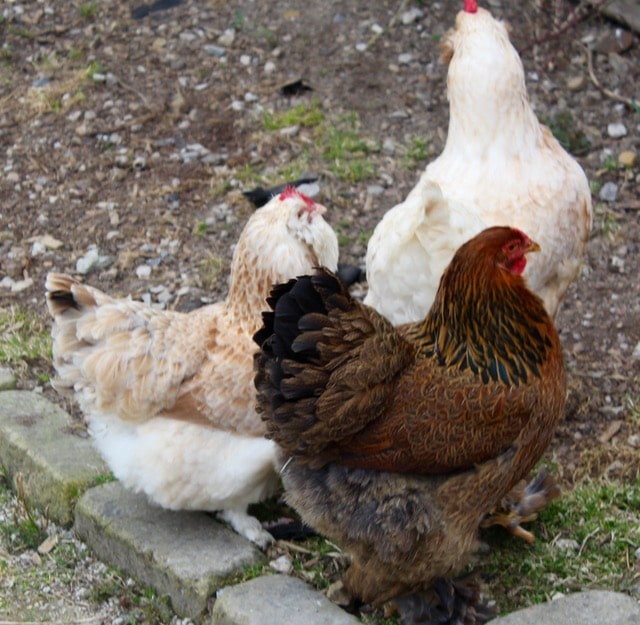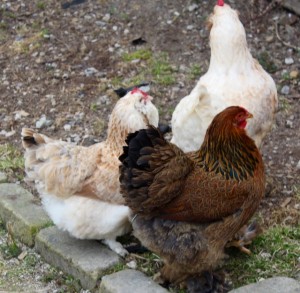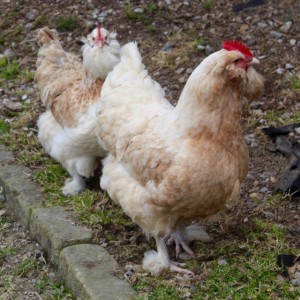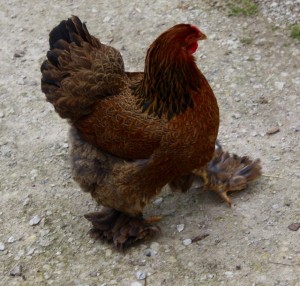Sanctuary Life
Spring chickens
There are millions of hens kept intensively in the world today – we can’t save them all but its good to ensure that some at least have a free and natural life. These three young ladies were brought in last week because of the health problems of their owner. We were very happy to have these good friends join us.
We have to integrate them gradually, the pecking order isn’t just a turn of phrase and hens that don’t know their place can be bullied. These are big hens though and dwarf the ones already at home here. Perhaps that’s why it’s all gone smoothly!
The brown speckled hen in the foreground is a Brahma hen called Brandy. She’s a real beauty, very big and well feathered, especially on her feet which is typical of the breed. Brahmas are said to have originated in India and then been taken to the United States. They came to England when some were given as a present to Queen Victoria.
Brahmas are gentle giants and Brandy is no exception, she even lets us pick her up. The two buff coloured hens behind her are Faverolls, which is a French breed. Again, these are bigger than average sized hens (although not up to the massive size of the Brahmas). The larger of the two Faverolles is called Sandy, the smaller is Peaches.
Faverolles are noted for their gentle nature and for being good pets. They both have red combs which usually means they are coming in to lay. What colour will their eggs be? Hens produce eggs whether there’s a cockerel running with them or not, the eggs won’t be fertile though.
All our sanctuary hens have a natural life with freedom and friendship. Hens are naturally gregarious and follow us round, they are inquisitive and like to know what we are doing. Sometimes they live to their teens. How different from the sad lives of commercially farmed hens.




